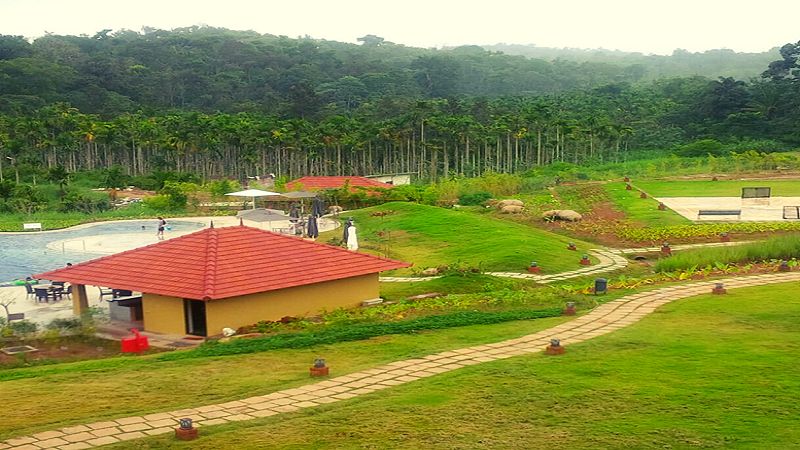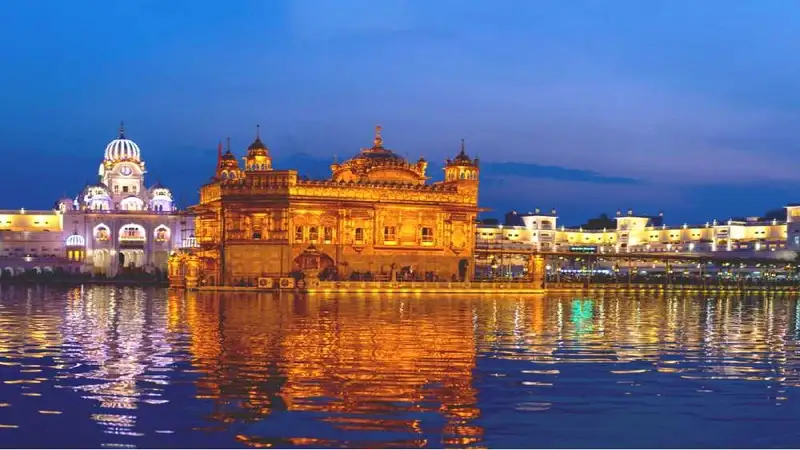March marks the transition from winter to spring in India, bringing vibrant colors, pleasant temperatures, and a sense of renewal. As nature awakens and festivities unfold, various cities across the country offer diverse experiences that cater to all kinds of travelers.
From spiritual havens to cultural celebrations, this article presents a curated list of 10 captivating Indian cities to visit in March, each promising an unforgettable journey of exploration and wonder.
1. Cherrapunji, Meghalaya

Known as one of the wettest places on Earth, Cherrapunji transforms into a lush paradise in March as the rains subside. The Nohkalikai Falls and living root bridges come alive against clear skies. The pristine landscapes and cool climate offer a perfect setting for nature enthusiasts and trekkers.
One of Cherrapunji’s most iconic attractions, the Nohkalikai Falls, is a majestic cascade of water that plunges from a dizzying height. The falls are most spectacular in March, with the waters flowing freely after the rainy season. Seeing the falls amidst the rejuvenated vegetation is a sight and a photographer’s delight.
Cherrapunji is renowned for its living root bridges, an extraordinary example of nature’s harmony with human creativity. These unique bridges are formed by guiding the aerial roots of rubber fig trees across streams. In March, these bridges are more accessible and surrounded by lush foliage, making them a perfect spot for nature walks and treks.
2. Patiala, Punjab

March brings the vibrant Baisakhi festival, and Patiala comes alive with colorful processions and cultural performances. Its palaces, gardens, and the iconic Qila Mubarak showcase the city’s regal heritage. Explore the bazaars, savor Punjabi cuisine, and immerse yourself in the festive spirit.
Patiala is steeped in history, with its roots tracing back to the 18th century when Baba Ala Singh founded it. The city’s historical significance is evident in its architectural marvels, including the Qila Mubarak Complex. The Qila Mubarak, a sprawling palace complex, showcases a fusion of architectural styles, reflecting the city’s multicultural heritage.
Patiala comes alive with vibrant colors and joyful celebrations during festivals. Baisakhi, the harvest festival, is celebrated with grand processions, traditional dances, and music performances. The city’s streets resonate with the beats of the dhol and the melodies of Punjabi folk songs, creating an atmosphere of infectious energy and merriment.
Patiala’s cultural heritage is celebrated through various art forms and performances. The Patiala Gharana of classical music has produced renowned musicians, and the city’s music festivals showcase the depth and richness of this musical tradition. The Natraj Cultural Festival, an annual event, features dance, music, and theater performances that celebrate Punjab’s artistic heritage.
3. Rishikesh, Uttarakhand
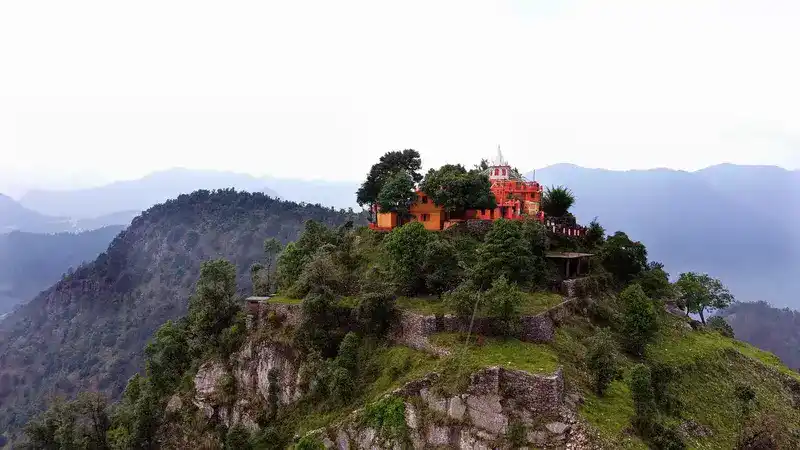
March in Rishikesh balances the cool winter and the upcoming summer heat. The International Yoga Festival amplifies the town’s spiritual ambiance, which attracts practitioners worldwide. Meditate by the Ganges, partake in yoga sessions, and rejuvenate in this Himalayan haven.
Rishikesh is often called the “Yoga Capital of the World,” for good reason. The town has been a hub of yoga and meditation for centuries, attracting seekers seeking inner peace and self-realization. The sacred atmosphere, coupled with the presence of numerous ashrams and spiritual centers, makes Rishikesh an ideal destination for those looking to deepen their spiritual practice.
One of the highlights of Rishikesh is the International Yoga Festival, held annually in March. Yoga enthusiasts from across the globe gather here to participate in a week-long celebration of yoga, meditation, and holistic wellness. The festival offers a unique opportunity to learn from revered yogis and spiritual teachers, explore various yoga styles, and immerse oneself in the teachings of ancient traditions.
The Ganga Aarti, a sacred ritual held at the Triveni Ghat, is a mesmerizing spectacle that draws visitors and locals alike. As the sun sets and the sky turns shades of orange and pink, the riverbank comes alive with the rhythmic chanting of hymns, the flickering flames of oil lamps, and the hypnotic movements of the priests.
4. Kohima, Nagaland
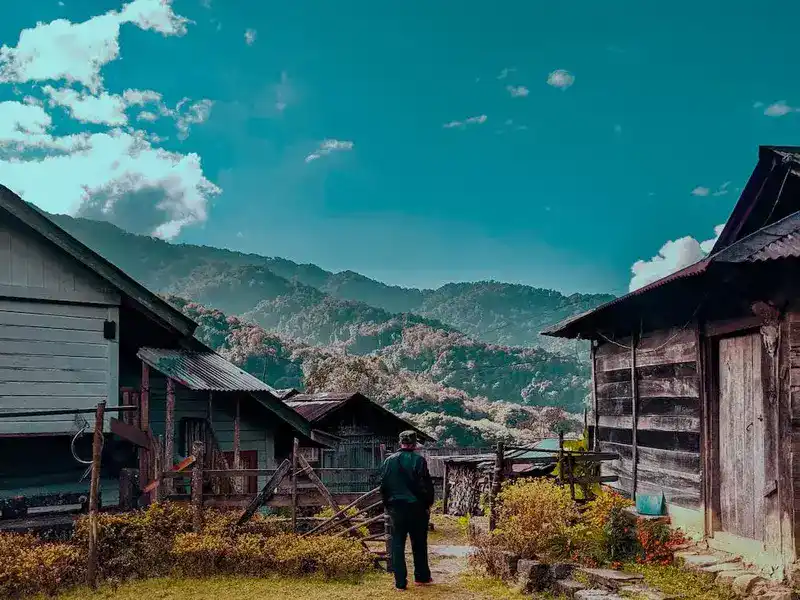
Reference: https://unsplash.com/photos/CTMW4jxNEQg
The vibrant Hornbill Festival, celebrated in March, showcases the cultural diversity of Nagaland. Kohima comes alive with traditional dances, music, and indigenous crafts. The festival provides a unique opportunity to witness the traditions of the Naga tribes and immerse yourself in their vibrant heritage.
Adjacent to Kohima, the Naga Heritage Village serves as a living museum that preserves and showcases the cultures of the various Naga tribes. Each tribe is represented by its unique architecture, artifacts, and traditional practices.
Exploring the Naga Heritage Village offers a remarkable opportunity to learn about the intricacies of tribal life, from traditional housing to agricultural practices. The village also hosts cultural events, exhibitions, and workshops, providing an immersive experience that deepens your understanding of the Naga way of life.
Kohima is also home to the poignant Kohima War Cemetery, a memorial dedicated to the soldiers who lost their lives during the Battle of Kohima in World War II. The cemetery is a sad reminder of the sacrifices made by Allied and Japanese forces during this historic conflict. The site’s serene ambiance and well-maintained grounds provide a place for reflection and paying homage to those who fought for freedom.
5. Mahabalipuram, Tamil Nadu

March’s moderate temperatures make Mahabalipuram’s historic wonders even more enticing. The UNESCO-listed Group of Monuments, including the iconic Shore Temple, come alive against the backdrop of the Bay of Bengal. Explore the intricate carvings, stroll along the beach, and savor the coastal cuisine.
The Group of Monuments at Mahabalipuram has been designated a UNESCO World Heritage Site, drawing history enthusiasts, archaeologists, and art lovers worldwide. The monuments, carved from large granite boulders, narrate stories from Hindu mythology and royal conquests.
The monolithic Rathas, rock-cut caves, bas-reliefs, and open-air bas-relief structures create an awe-inspiring ensemble that transports visitors back in time.
The iconic Shore Temple is the most recognized structure in Mahabalipuram. This beautifully preserved temple complex, situated on the Bay of Bengal’s shores, is a stone architecture masterpiece. Its two towering shrines, dedicated to Lord Shiva and Lord Vishnu, are adorned with delicate sculptures and intricate carvings that evoke a sense of reverence and admiration.
6. Lachen, Sikkim
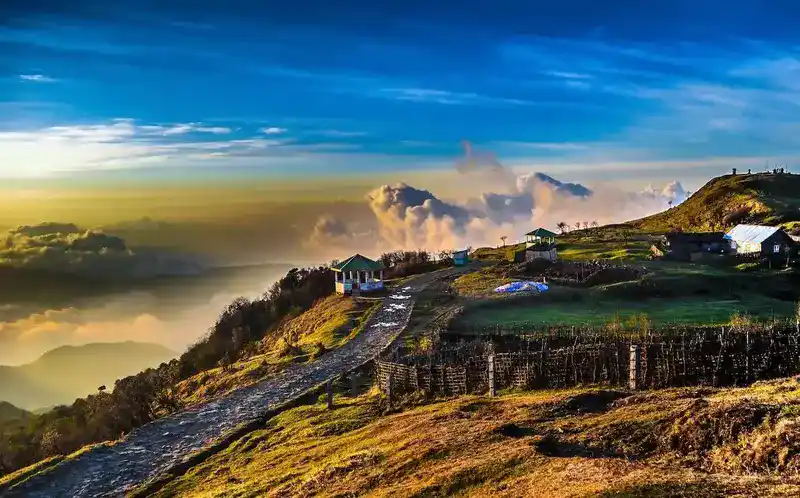
Lachen is a picturesque destination in March for those seeking a winter retreat. Surrounded by snow-clad peaks, this serene hamlet offers a tranquil escape from the bustling world. The pristine beauty of Lachen Valley and the Gurudongmar Lake captivate travelers seeking solitude and breathtaking landscapes.
Lachen is surrounded by a canvas of natural beauty that captivates the senses. Snow-capped peaks, lush valleys, and glistening rivers cradle the village. As winter begins to fade in March, the landscape awakens with bursts of color as vibrant wildflowers dot the meadows, adding to the already stunning panorama. The majestic Lachen Valley, with its verdant pastures and pristine lakes, invites explorers to embark on treks that lead to mesmerizing vistas.
One of the crown jewels of Lachen is the awe-inspiring Gurudongmar Lake. Accessible from the village, this sacred lake is one of the highest in the world and remains frozen for a significant part of the year.
In March, as winter makes way for spring, the lake starts to thaw, revealing its crystal-clear waters that reflect the surrounding peaks. The journey to Gurudongmar Lake takes travelers through awe-inspiring landscapes, where the beauty of the Himalayas unfolds at every turn.
7. Ujjain, Madhya Pradesh
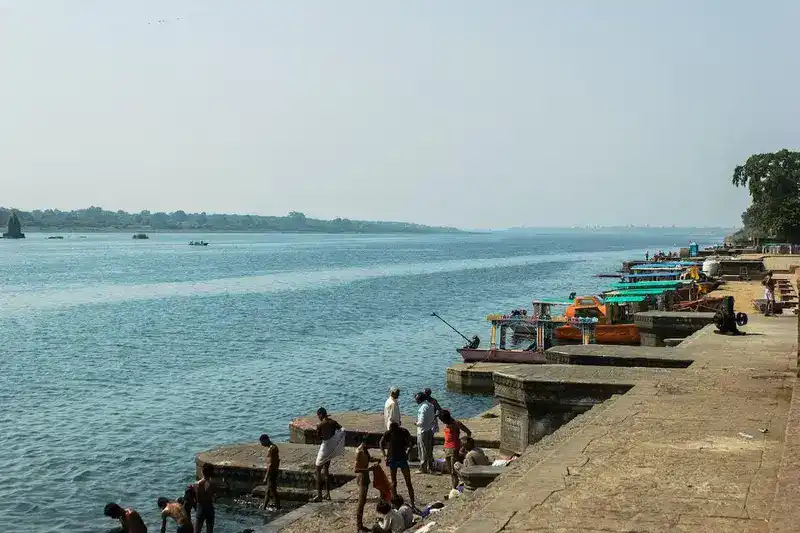
March is an auspicious time for spiritual seekers to visit Ujjain, as the city hosts the grand Kumbh Mela. The banks of the Shipra River become a pilgrimage site for millions, who participate in rituals and ceremonies and seek blessings from the divine.
Ujjain is often called the “City of Temples” due to its rich collection of religious sites. Among these, the Mahakaleshwar Jyotirlinga is one of the twelve shrines dedicated to Lord Shiva.
The temple’s unique feature is its Bhasma Aarti, a ritual where sacred ashes are applied to devotees, symbolizing the cycle of creation and destruction. Witnessing this sacred ceremony is a deeply spiritual experience that lingers in the memory.
The Shipra River holds immense significance in Ujjain’s spiritual landscape. The Simhastha Kumbh Mela, a grand festival held every 12 years, draws millions of pilgrims who gather to dip in the holy waters, seeking purification and spiritual blessings. The ghats along the riverbank witness a vibrant blend of rituals, meditation, and devotion, creating an atmosphere of profound spirituality.
Ujjain’s historical heritage is evident in its architectural gems. The Kal Bhairav Temple’s intricate carvings, the Harsiddhi Temple’s grandeur, and the Sandipani Ashram’s serene ambiance pay homage to the city’s ancient past. The observatory of Maharaja Jai Singh II, known as the Vedh Shala, showcases Ujjain’s scholars’ scientific and astronomical prowess.
8. Pelling, Sikkim

With the onset of spring, Pelling showcases the Kanchenjunga range in all its splendor. The clear skies provide stunning vistas, making it a paradise for trekkers and nature lovers. Visit the Pemayangtse Monastery, explore the serene landscapes, and revel in the Himalayan beauty.
One of the most alluring aspects of Pelling is its panoramic views of the majestic Kanchenjunga, the third-highest peak in the world. The clear skies of March offer a perfect backdrop to witness the changing hues of the mountain range, especially during sunrise and sunset. The sight of the sun’s first rays illuminating the snow-clad peaks is a moment of unparalleled beauty that etches itself into the memory.
Pelling is home to the renowned Pemayangtse Monastery, one of Sikkim’s oldest and most significant monasteries. Perched atop a hill, this architectural marvel exudes an aura of serenity and spirituality.
The monastery has intricate carvings, vibrant frescoes, and a stunning seven-tiered wooden model of Guru Rinpoche’s heavenly palace. Visitors can partake in the spiritual ambiance, witness the chanting of monks, and admire the craftsmanship that reflects the region’s rich heritage.
9. Tarkarli, Maharashtra

Reference: https://unsplash.com/photos/p9SnAaEzXhA
Tarkarli’s pristine beaches and tranquil backwaters offer a serene escape in March. The pleasant weather is perfect for water sports, snorkeling, and enjoying the coastal beauty. The historic Sindhudurg Fort and the clear waters of the Arabian Sea add to the allure.
Tarkarli is renowned for its unspoiled beaches that stretch along the coastline like glistening ribbons of golden sand. The tranquil ambiance of the beaches is perfect for strolls, sunbathing, or simply watching the waves kiss the shore. Devbagh Beach, Tarkarli Beach, and Achra Beach are popular stretches where you can unwind and bask in the coastal beauty.
One of the highlights of Tarkarli is its vibrant underwater ecosystem. The clear waters provide excellent visibility, making it an ideal scuba diving and snorkeling destination. Delve beneath the surface to discover colorful coral reefs, exotic marine life, and the enchanting world beneath the waves. Snorkeling trips to the Malvan Marine Sanctuary allow you to witness the incredible biodiversity of the Arabian Sea.
The historic Sindhudurg Fort is a testament to the region’s rich heritage. Built by Chhatrapati Shivaji Maharaj in the 17th century, this sea fort is an architectural marvel that reflects the ingenuity of its time. Explore the fort’s impressive structures, secret passageways, and the breathtaking view of the Arabian Sea from its ramparts.
10. Alleppey, Kerala
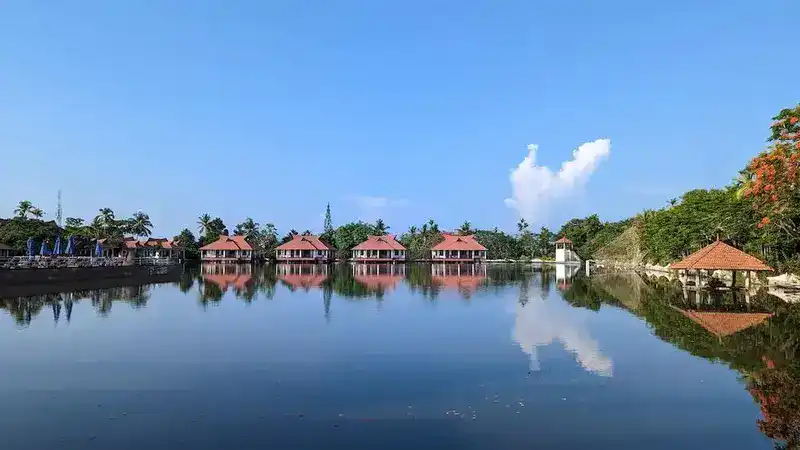
Reference: https://unsplash.com/photos/ItVJv4vr_N4
Experience the tranquil backwaters of Kerala in March by visiting Alleppey. Houseboat cruises along the palm-fringed waterways provide a unique way to explore picturesque landscapes. Relax, unwind, and enjoy the beauty of the “Venice of the East.”
Alleppey’s backwaters are its defining feature and offer an experience like no other. A leisurely houseboat cruise along these calm waterways lets you witness life unfolding along the banks. Lush coconut groves, traditional village scenes, and glimpses of daily life create a tapestry of beauty that immerses you in the heart of Kerala’s rural landscape.
Staying aboard a traditional Kerala houseboat is a quintessential Alleppey experience. These charming vessels, often crafted from bamboo and wood, offer a luxurious yet authentic way to explore the backwaters. Drift along the serene canals, relishing the tranquil ambiance while enjoying freshly prepared Kerala cuisine by skilled onboard chefs.
Final Words
March in India offers many travel opportunities, from spiritual sanctuaries to cultural celebrations and natural wonders. Whether you’re drawn to the vibrant festivals of Kohima or the serene landscapes of Tarkarli, these ten captivating cities invite you to embark on a journey of discovery, celebration, and rejuvenation in the heart of India’s diverse and enchanting tapestry.












